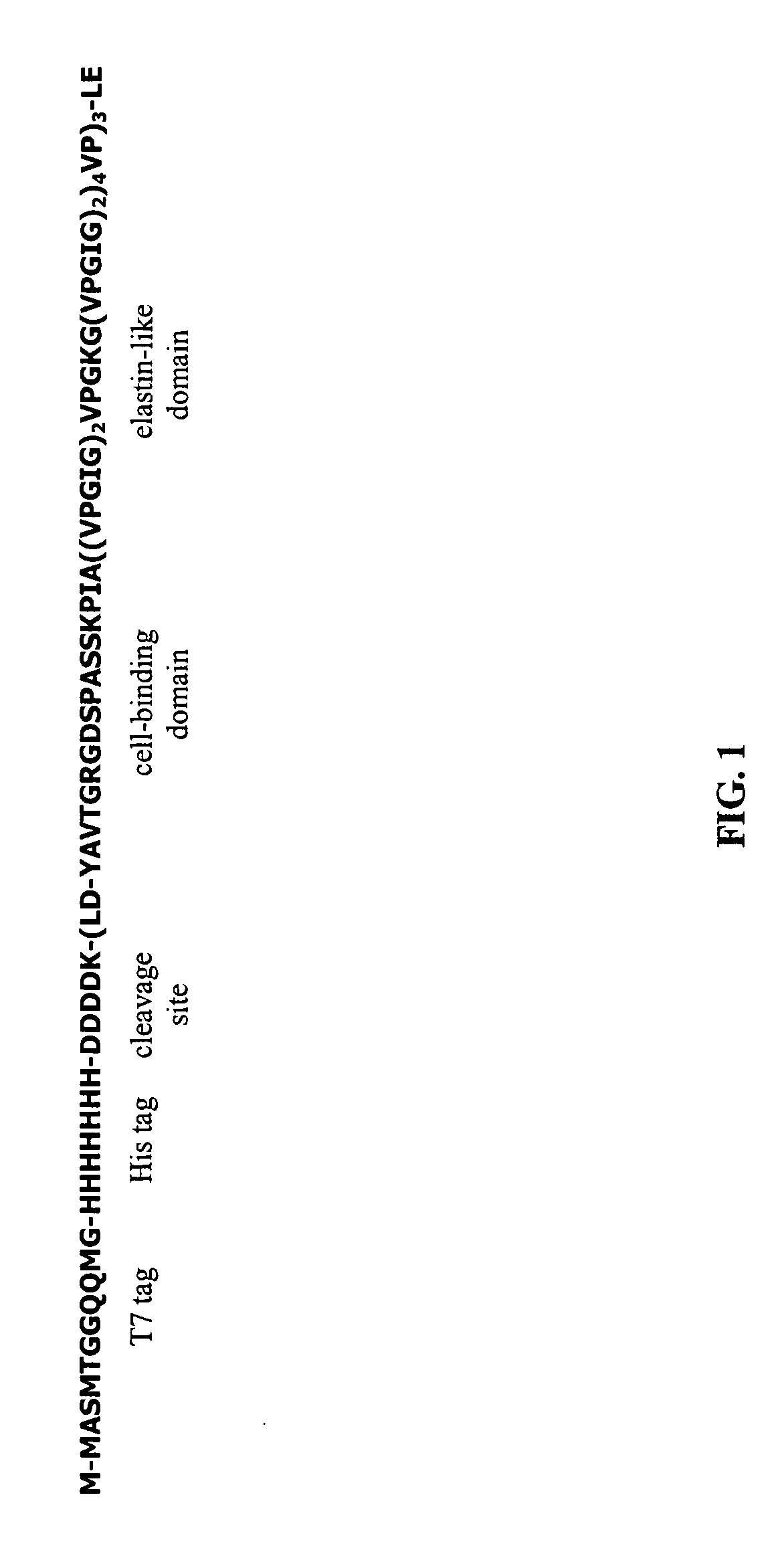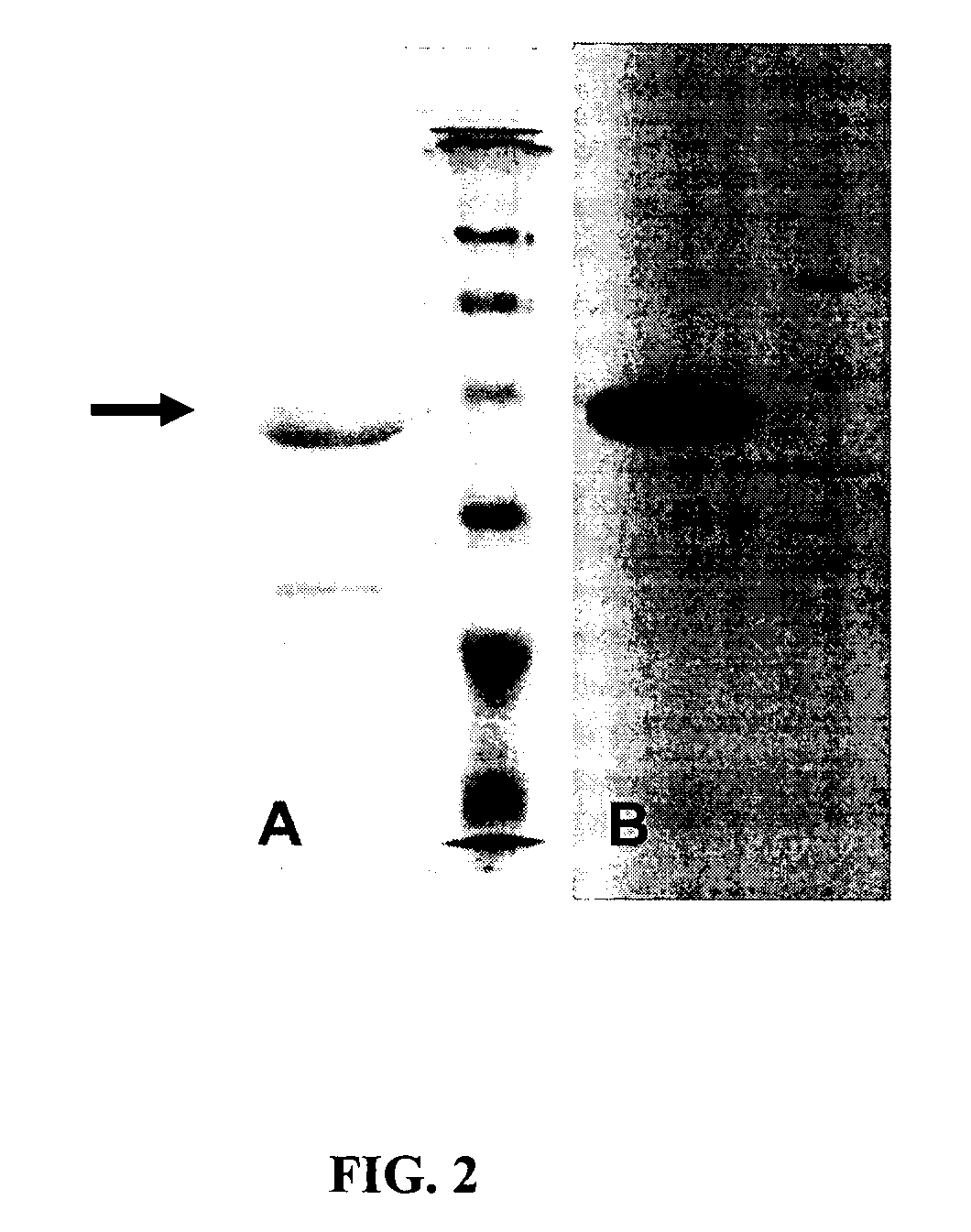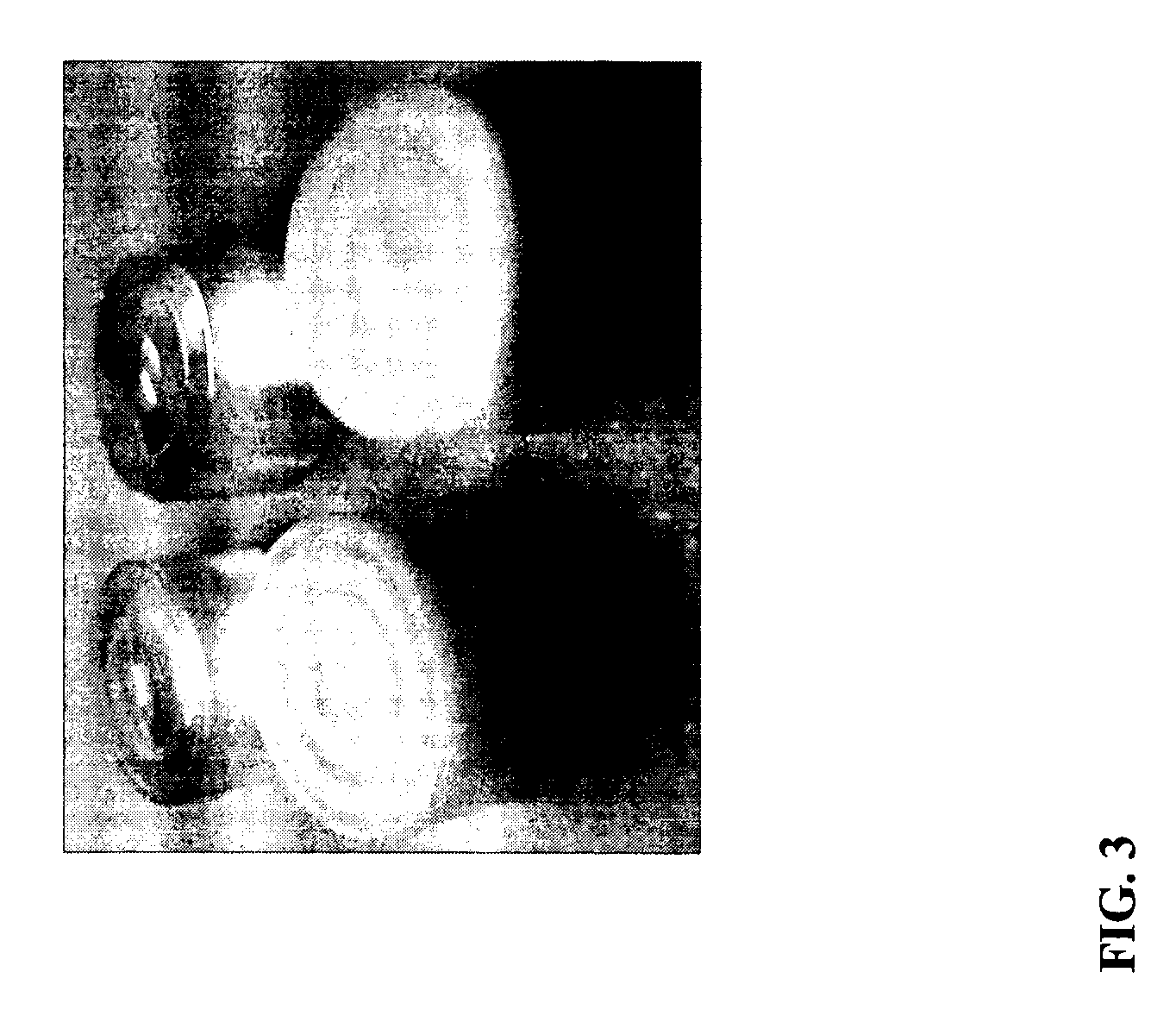Engineered proteins, and methods of making and using
- Summary
- Abstract
- Description
- Claims
- Application Information
AI Technical Summary
Benefits of technology
Problems solved by technology
Method used
Image
Examples
example 1
Cloning and Expression of aECM Protein “aE-RGD”
[0101] Protein aE-RGD with the amino acid sequence: M-MASMTGGQQMG-HHHHHHH-DDDDK-(LD-YAVTGRGDSPASSKPIA((VPGIG)2VPGKG(VPGIG)2)4VP)3-LE (SEQ ID NO:1) contains a T7 tag used for identification by western blotting, a 6-His tag that can be used for purification, an enterokinase cleavage site which allows the T7 and 6-His tags to be removed enzymatically, and three alternating repeats of the cell-binding elastin-like domains. The 17-amino acid cell-binding domain, which includes RGD, is taken from the tenth type III domain of fibronectin; it serves as a ligand for the αvβ3 and α5β1 integrins. Other cell binding domains, including the CS1 and CS5 domains from fibronectin, have also been genetically engineered into the same design, in place of the RGD domain. The cell-binding domain can be chosen, from these or other potential bioactive domains to elicit the most favorable cellular response. The elastin-like domains are modified versions of the ...
example 2
Purification of aE-RGD Protein
[0104] Cells containing the expressed aE-RGD protein were resuspended in TEN buffer (10 mM Tris-HC1, pH 7.5, 1 mM EDTA, 100 mM NaCI) at a concentration of 0.5 g / mL, and frozen at −20° C. The suspension was defrosted, lysing the cells, and shaken with 10 μg / mL of deoxyribonuclease I, 10 μg / mL of ribonuclease A, 5 mM magnesium chloride, and 1 mM phenylmethylsulfonyl fluoride to inhibit proteolysis, at 37° C. for −3 h, or at 4° C. overnight. The lower critical solution temperature (LCST) behavior of aE-RGD, where the protein separates from an aqueous solution as the temperature is raised, allows the protein to be purified by temperature cycling (the LCST of aE-RGD in water is 35° C.). The pH of the cell lysate was adjusted to 9.0, to ensure protein solubility, and centrifuged below the LCST (˜1 h, 39,750 g, 4° C.). To the supernatant (containing the protein), 1 M NaCl was added, and centrifugation was repeated above the LCST (˜1 h, 39,750 g, 37° C.). The ...
example 3
Cross-linking aE-RGD to Form Corneal Onlays
[0106] Cross-linking aE-RGD with bis(sulfosuccinimidyl) suberate (BS3) in water at 4° C. results in films with elastic modulus 0.2 MPa, which remain transparent at physiological temperatures. Corneal onlay lenses are made with this chemistry using two-piece PMMA molds of 6 mm optic diameter and 7.5 mm radius. All operations are done at 4° C., well below the LCST of aE-RGD, to ensure transparency. For each batch, 20 mg of aE-RGD is dissolved in 55 uL of water, then 2.3 mg of BS3 just dissolved in 20 uL of water is mixed in (the N-hydroxysuccinimidyl ester groups in BS3 are stoichiometric to primary-amines in the protein). The samples are quickly spun (10 sec) on a tabletop centrifuge to remove bubbles introduced in mixing and 12 μL of the mixture is pipetted into each of 5 molds, which are assembled under a weight (−300 g) and cross-linked overnight at 4° C. Several lenses have been tested for elastic modulus, and a value of approximately 0...
PUM
| Property | Measurement | Unit |
|---|---|---|
| Elastic modulus | aaaaa | aaaaa |
| Elastic modulus | aaaaa | aaaaa |
| Atomic weight | aaaaa | aaaaa |
Abstract
Description
Claims
Application Information
 Login to View More
Login to View More - R&D Engineer
- R&D Manager
- IP Professional
- Industry Leading Data Capabilities
- Powerful AI technology
- Patent DNA Extraction
Browse by: Latest US Patents, China's latest patents, Technical Efficacy Thesaurus, Application Domain, Technology Topic, Popular Technical Reports.
© 2024 PatSnap. All rights reserved.Legal|Privacy policy|Modern Slavery Act Transparency Statement|Sitemap|About US| Contact US: help@patsnap.com










